A step-by-step guide on staking $UMEE Umee Network with Cosmos' most famous wallet: Keplr Wallet
UX is a cross-chain DeFi (Decentralized Finance) hub, a universal, permissionless platform meant to serve all types of users and projects throughout their DeFi journeys. UX (formerly Umee) provides users with the ability to lend and borrow across different blockchains easily. As a base layer DeFi protocol, UX will provide the necessary infrastructure for users and builders to access cross-chain leverage and liquidity.
As a Cosmos SDK blockchain, the UX Chain is interoperable with blockchains, including Akash and other IBC-compatible chains. Furthermore, UX will connect various ecosystems and develop novel financial products on top. UX will incorporate tools such as layer 2 scaling solutions, side chain architectures, tools from the roll-ups ecosystem as well as alternative base layer protocols for connecting between blockchain networks.
UX (Umee) is a Proof-of-Stake network with decentralized governance, and its native asset is called $UX (UMEE). The asset can exist as a Cosmos SDK chain asset, as well as an ERC20 token for the Ethereum-based chains.
Creating and Funding Your Keplr Wallet
- To get started, go to: https://wallet.keplr.app/ to download the Keplr extension.
Open the page, select "Create a new wallet" to start setting up your account. You can choose to import an existing account if you already have a Keplr Wallet that you're currently not logged in to.
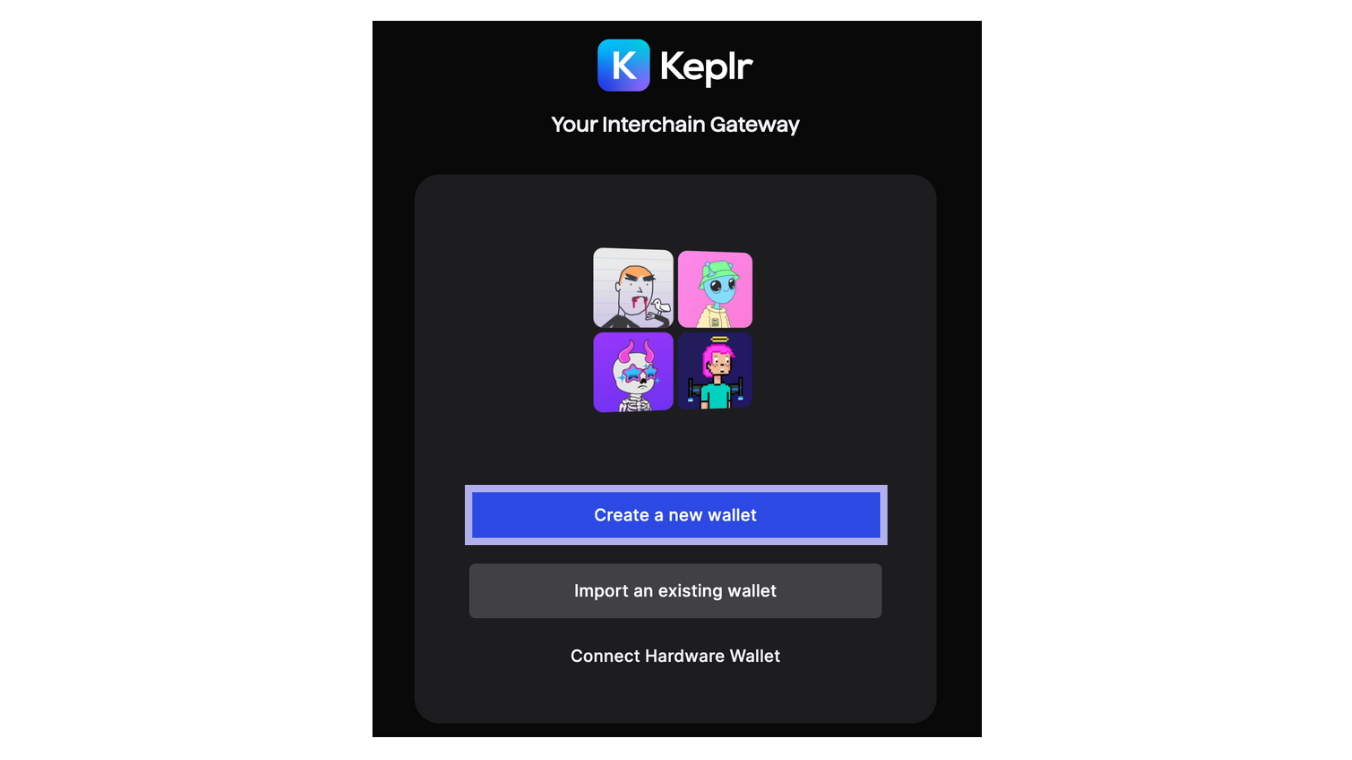
If you've selected "Create a new wallet", Keplr will ask you to select a new recovery phrase or to connect with Google. In this guide, we'll use the Recovery Phrase.
Remember to store your recovery phrase securely offline and never share it with anyone. If you lose your recovery phrase, you will lose the assets within the wallet.
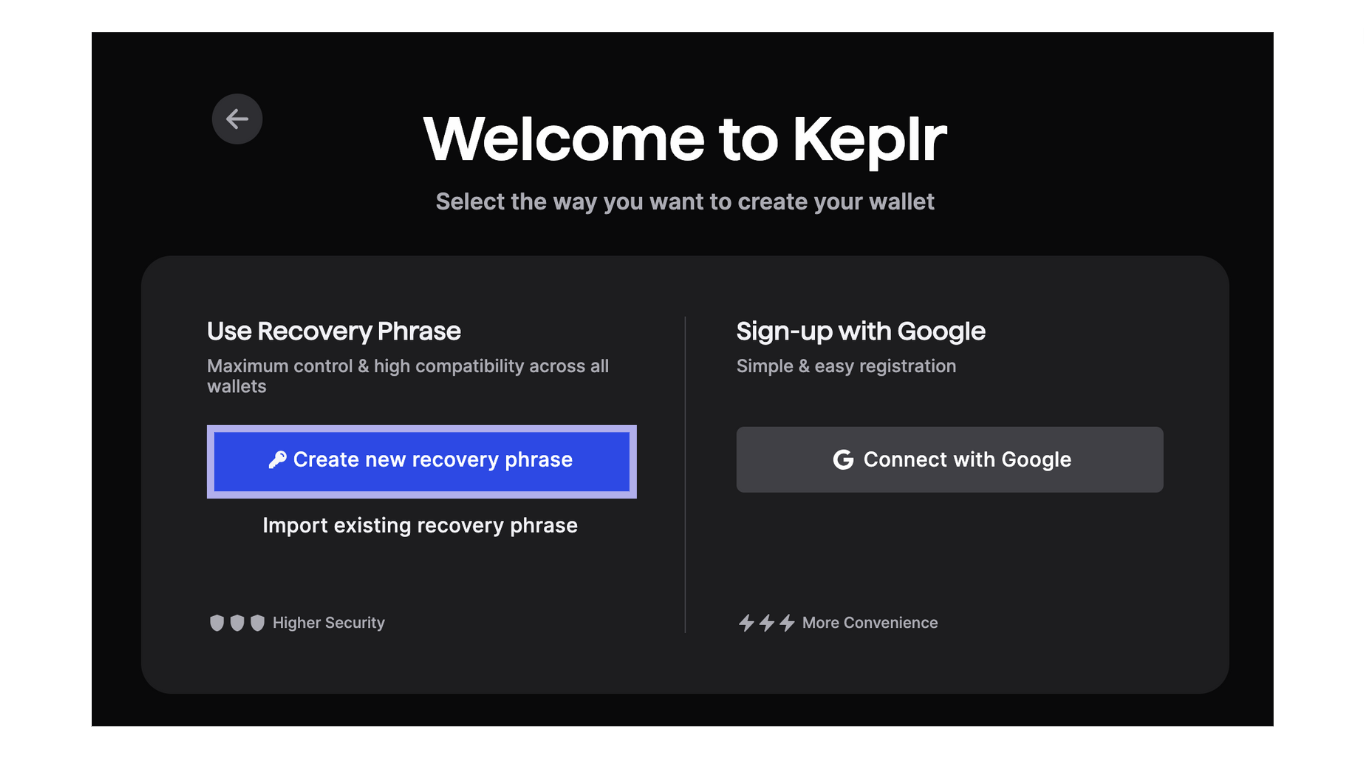
Ensure you copy the seed phrase somewhere safe. Create an account name and desired password to access the wallet and confirm by selecting "Next".
To confirm the creation of your Keplr wallet, fill out a selected number of seed phrase words and select "Register".
You're Keplr wallet is now ready. Go to: https://wallet.keplr.app/ to continue.
Funding Your Wallet
--> You can purchase your $UX (UMEE) on a DEX such as Osmosis if you don't have any yet.
You can deposit your $UX (UMEE) to your Keplr wallet by selecting "UX" on the left menu under assets. Next, copy the public wallet address on the top right of your dashboard or click on "Deposit" to copy the address there.
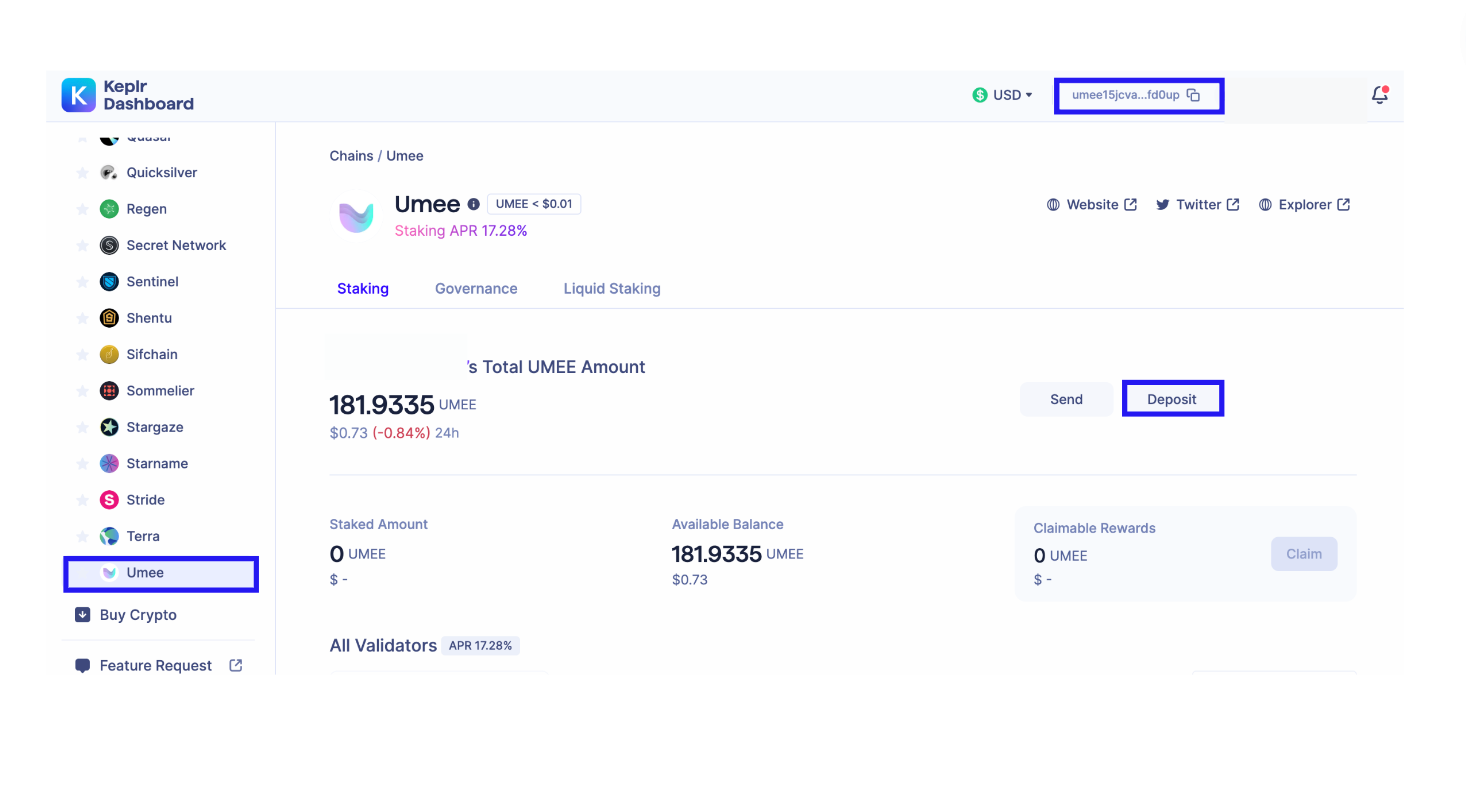
Send the $UX (UMEE) to your new wallet, wait a few seconds, and now you're ready to start staking.
Staking UX
Now that your wallet is set up and funded, it's time to start staking. In the Keplr wallet dashboard, make sure you've selected UX's staking tab (see the image below).
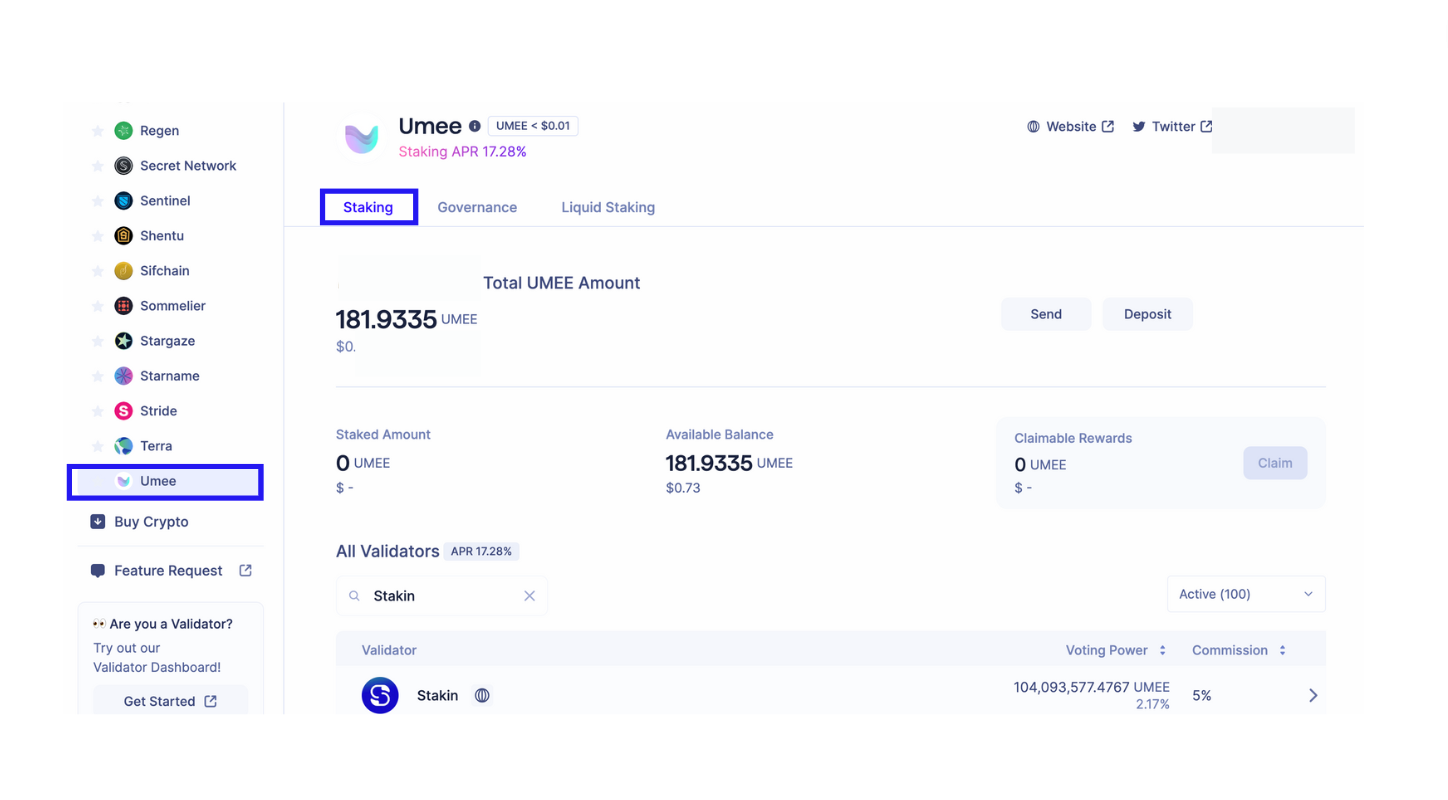
A list of validators should be visible. Select a validator by adding the name of your desired validator in the search bar or by scrolling down. To select the validator, click on their name. A pop-up will appear. In the pop-up, select "Delegate" to continue.
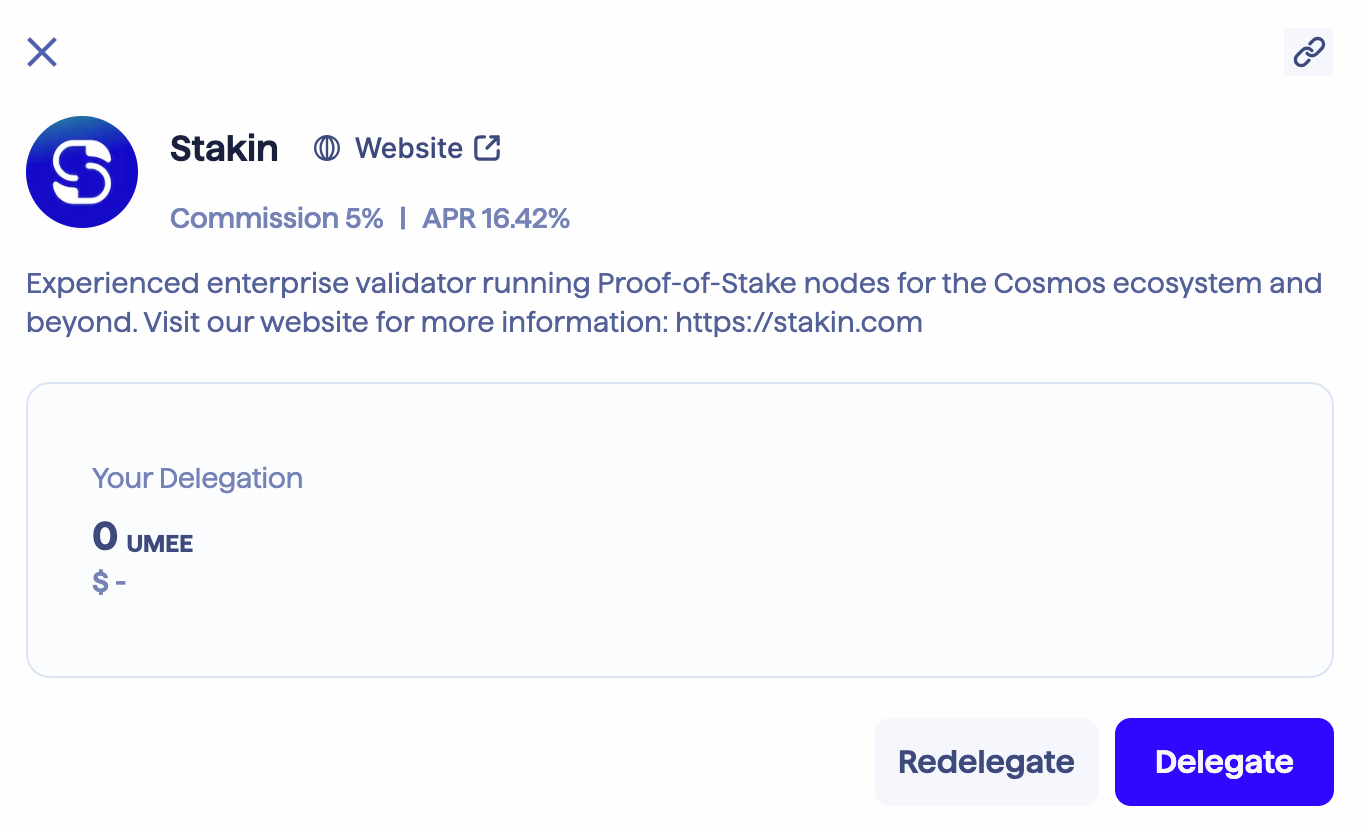
Once you've selected "Delegate", fill out the number of $UX (UMEE) that you'd like to stake and select "Delegate" once again.
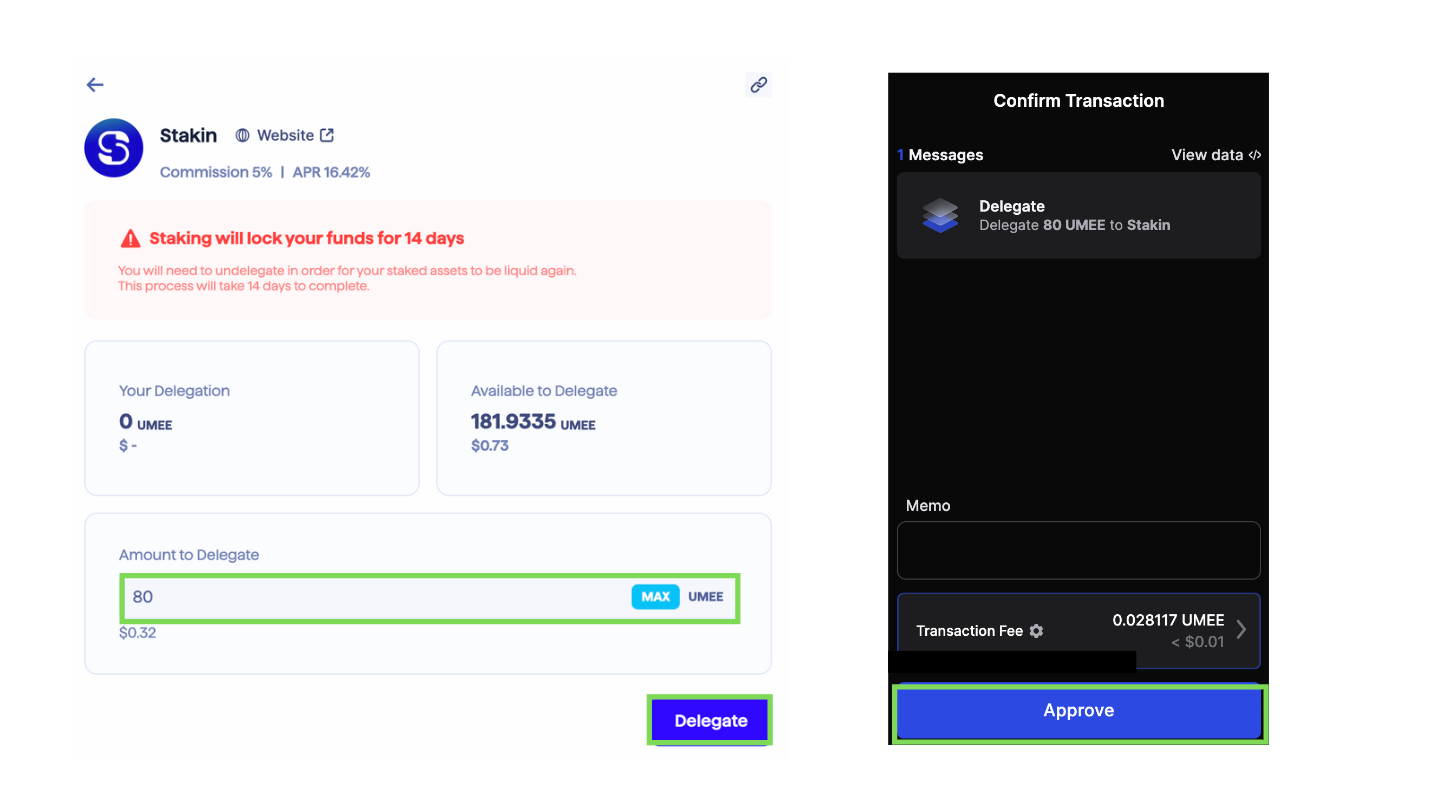
Check the transaction details and select "Approve".
Congratulations! You’ve now staked your $UX.
DISCLAIMER: This is not financial advice. Staking, delegation, and cryptocurrencies involve a high degree of risk, and there is always the possibility of loss, including the failure of all staked digital assets. Additionally, delegators are at risk of slashing in case of security or liveness faults on some protocols. We advise you to do your due diligence before choosing a validator.


Join the conversation